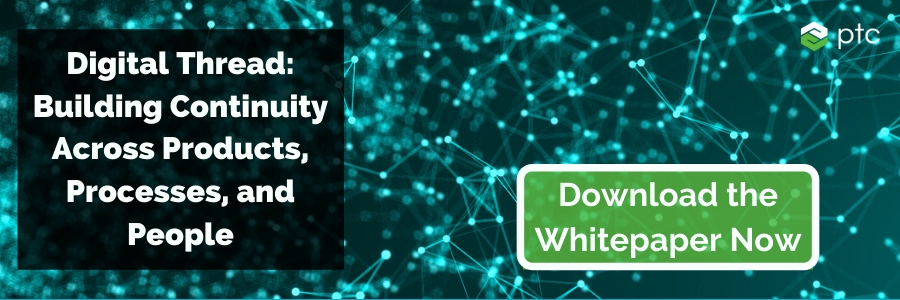
Similar to digital transformation, there isn’t a universal digital thread technology. Every organization requires a mix of digital thread technologies that are unique to their circumstances and strategies. Ultimately, technologies that power high-value use cases that align with business goals are typically the most successful.
Digital thread technology can include a mix of existing in-house systems such as data management tools and increasingly more tailored software applications generating emerging digital thread use cases.
However, some technologies that claimed similar data unification goals as the digital thread failed to meet expectations for many organizations. For example, general-purpose data aggregation and management tools such as data lakes do not have effective management capabilities, according to Gartner.
Industrial domain specific software such as product lifecycle management (PLM) and the Industrial Internet of Things (IIoT) are digital thread technologies driving value across products, processes, and people today.
Below we will dive deeper into how these digital thread technologies are being implemented today.Discrete manufacturers are constantly looking to create differentiating products yet are faced with restricted production capacity and finite financial resources. These OEMs need to invest in technologies that drive impact across their value chain.
The digital thread story for these product manufacturers typically starts in the engineering department and scales through manufacturing processes. Sourcing different forms of data across a product's lifecycle in a single updatable digital method is highly valuable. According to LNS Research, these different product data sources can include quality (59% of manufacturers are sourcing), production (58%), machine/sensors (57%), supplier (46%), materials (45%), and financial (43%).
Manufacturers are turning to PLM systems to seamlessly orchestrate these traditionally disparate data sources and create differentiating products. For example, using PLM for real-time synchronization of out-in-the-field product quality data can give service teams critical repair insights. Similarly, engineering departments can leverage product performance feedback to improve future product iterations.
Using PLM to link manufacturing production process data (bill-of-materials, configurations) with internal factory assets, including IIoT-enabled machines, external supplier and material data, can drastically expedite new product development and time-to-market.
Democratizing common product models and seamlessly managing product changes as they scale the value chain will unify traditionally siloed departments. Market trends including mass customization and customer-centricity will further drive digital thread adoption. Groupe Beneteau, Volvo, and Vestas are proving this concept to solve the product complexity challenges they face.
Processes within factories, production facilities, and other industrial environments rely on a range of different and often disconnected data sources. This could include sensor data from machines and robots, connectivity gateways and logic controllers on the factory floor, work instructions for factory personnel, on-site data management systems, or ERP software integrating with offsite back-end business systems, among other industrial systems.
Many industrial enterprises are either implementing (29% of LNS Research survey respondents) or are in pilot stages (34%) of rolling out a common data model/architecture across these IT and OT systems within industrial environments.
IIoT solutions are increasingly the digital thread technology to connect, aggregate, manage, and analyze assets and data across these heterogeneous industrial environments. IIoT software provides a powerful bridge to source both in-factory OT data and usually offsite IT data, while contextualizing and redistributing this information across functions.
For example, aggregating machine health inputs can be contextualized for repair instructions to reduce downtime and improve overall equipment effectiveness (OEE). Using analytics, this data can also unlock broader plant insights to better optimize factory capacity and improve related process KPIs such as throughput and changeover times.
The digital thread will continue to unify manufacturing operations and 451 Research cites 53% currently use or will use digital thread technology for faster access to cross plant instrumentation and status. Pactiv, Carlsberg, and Lavifood are a few cutting edge manufacturers adopting this digital thread process mindset.
While people-centric metrics such as overall labor effectiveness and first-time fix rates drive daily strategic considerations and operating costs, there haven’t been many technological strides for the 2.5 billion front-line workers across the globe.
A fundamental goal of digital thread technology is to get the right information to the right person at the right time. While we illustrated PLMs functionality for democratizing product data to different personnel, other cutting-edge digital thread technologies are entering the fray to empower front-line workers. Augmented reality is providing a platform to transfer information to-and-from the front-line worker.
Placing augmented reality (AR) into front-line workers field-of-view gives service technicians accurate and up-to-date repair instructions and factory workers assembly instructions. Using AR to capture expert workflows can be repurposed for training junior-level staff or even quickly enabling other companies to manufacture products such as ventilators during the COVID-19 crisis.
AR provides an innovative means to source and display critical information from multiple domains as well as capture critical work to inform the broader value chain. GlobalFoundries and Mercedes-Benz are two manufacturers implementing AR use cases intertwined with the digital thread today.
Successful implementations of digital thread technologies must take business needs and strategic initiatives in mind. This digital thread strategy will likely involve a mix of in-house traditional data management tools and novel technologies capable of sourcing and scaling additional internal and increasingly external forms of data. PLM, IIoT, and AR will be top-of-mind digital thread technologies for industrial companies seeking to differentiate products, optimize processes, and/or empower people.

David Immerman is a business analyst on PTC’s Corporate Marketing team providing thought leadership on technologies, trends, markets, and other topics. Previously David was an industry analyst in 451 Research’s Internet of Things channel primarily covering the smart transportation space and automotive technology markets, including fleet telematics, connected cars, and autonomous vehicles. He also spent time researching IoT-enabling technologies and other industry verticals including industrial. Prior to 451 Research, David conducted market research at IDC.
©Copyright 2025. All rights reserved by Modelcam Technologies Private Limited PUNE.